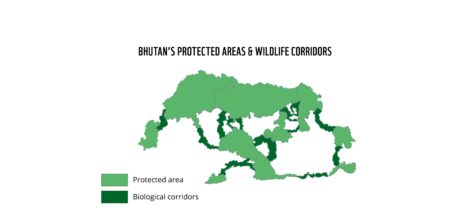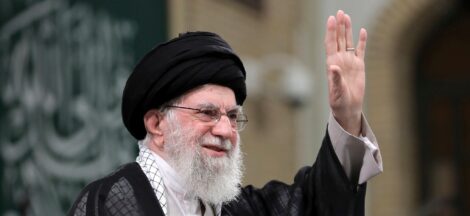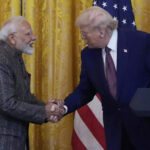U.S. President Donald Trump cut short his attendance at the G7 summit in Kananaskis, Canada, returning to Washington to oversee national security preparations amid heightened Middle East tensions. White House Press Secretary Karoline Leavitt announced that Trump would depart after the summit dinner, citing developments “in the Middle East.” Leavitt also confirmed that the President had requested the National Security Council be prepared in the White House Situation Room.
Trump’s abrupt departure coincided with his warning on the Truth Social platform urging Iranians to “immediately evacuate Tehran” and asserting that Iran “CAN NOT HAVE A NUCLEAR WEAPON.” He also blamed Tehran for failing to sign a nuclear agreement with the U.S.. Simultaneously, Fox News reported that Trump had requested the NSC to convene in the Situation Room, prompting heightened national security activity as U.S. forces are being repositioned in the Middle East.
At the G7 summit, Trump criticised Washington’s decision to expel Russia in 2014, praised the trade deal reached with British Prime Minister Keir Starmer, and declined to sign a joint communique on the Israel–Iran conflict—a move viewed as undermining a unified Western stance. French President Emmanuel Macron indicated Trump had made a proposal for a ceasefire between Israel and Iran, although the U.S. resisted formal endorsement.
In Washington, Defence Secretary Pete Hegseth authorised “additional capabilities” for U.S. Central Command, including deployment of assets like the USS Nimitz carrier alongside the USS Carl Vinson, reinforcing regional deterrence. Leavitt framed the moves as prioritising national security staging, stating that much was achieved at the G7 but the situation warranted Trump’s immediate return.
The signal to the National Security Council is significant: the Situation Room, located in the West Wing basement, is the nerve centre for intelligence and crisis management, enabling direct communication between the President and senior national security team. This level of readiness underscores the gravity the Trump administration assigns to Middle East developments, particularly the intense exchanges between Israeli forces and Iran.
The Israel–Iran conflict has intensified since Israeli strikes targeted key Iranian infrastructure, including the Natanz nuclear site and state-run television stations in Tehran. Iran retaliated with missile fire into Israel, resulting in casualties on both sides and prompting evacuation advisories in affected areas. Media reports put the death toll at approximately 224 in Iran and 24 in Israel, with both sides accusing the other of escalating towards wider conflict.
Within the U.S., Congress has responded with a bipartisan war powers resolution aimed at limiting unilateral military action by the President, underscoring domestic concerns about escalating engagement. Public opinion within Trump’s political base appears divided: some support a hawkish stance, others favour restraint—a rift that reflects broader uncertainty over U.S. involvement.
Trump’s foreign policy moves at the summit were overshadowed by the Middle East crisis, although he secured endorsement from Starmer on a trade accord reducing U.S. tariffs on British goods. His refusal to back the G7’s joint de-escalation statement and overt support for Russian President Vladimir Putin strained ties with other leaders, raising questions about the cohesion of the alliance.
As U.S. naval forces shift to bolster regional defences, Trump’s return to Washington suggests an administration preparing for rapid escalation. His proximity to allies like Israel and his assertive rhetoric signal a strategy of pressure rather than diplomacy. Defence Secretary Hegseth’s declaration of “peace through strength” emphasises deterrence as the chosen pathway.




 Modi Denies US Role in Ceasefire During Trump Call
Modi Denies US Role in Ceasefire During Trump Call 